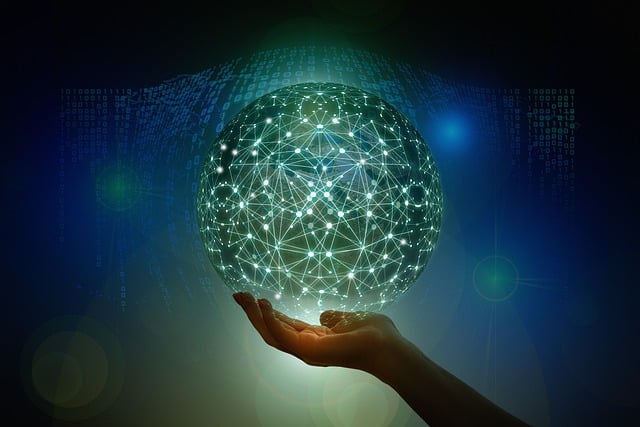What is Web 3.0? Technology, Decentralization, & Advantages
What is Web 3.0?
Web 3.0 revolutionizes the internet, offering a decentralized and user-centric experience. It ensures data and information are distributed across interconnected nodes, granting users greater control and security. Powered by blockchain and peer-to-peer networks, Web 3.0 promotes transparency, privacy, and personalized interactions. It aims to create an inclusive and trustworthy digital ecosystem that empowers individuals.
Web 3.0 incorporates technologies such as blockchain, decentralized networks, artificial intelligence, and semantic web to enable greater privacy, trust, and user control. It empowers individuals, promotes peer-to-peer connections, and improves platform and service interoperability. It revolutionizes internet interactions, unlocking innovation, collaboration, and digital sovereignty.

Brief history of the Web: from Web 1.0 to Web 2.0
A variety of stages have been experienced by the internet since its inception in the 1980s.
A static web was the original version of the internet, often referred to as web 1.0. It was primarily a one-way communication platform, where users could only consume content but not interact with it.
By providing interactive experiences, Web 2.0 revolutionized the web in the early 2000s. It introduced technologies and platforms for active user participation and content contribution, including social media, blogs, and wikis.
In Web 2.0, user-centered design and the importance of user experience were prominent themes, resulting in responsive design and mobile-friendly websites.
Web 2.0 transformed the internet, making it interactive and fun for everyone into a vibrant playground for gaming, socializing, and storytelling. It brought a whole new world of creativity and enjoyment online.
Web 3.0 Technology
Web 3.0 technology represents the future of the internet, offering enhanced intelligence, decentralization, and security. Here are key technologies associated with Web 3.0:
1. Blockchain technology: This is the underlying technology of cryptocurrencies like Bitcoin and Ethereum. Blockchain revolutionizes data storage and sharing by offering a decentralized and secure approach. It ensures unparalleled trust, transparency, and immutability in digital transactions.
2. Artificial intelligence (AI): Web 3.0 will leverage the power of AI to enable machines to comprehend natural language, identify images, and autonomously make precise decisions. This advancement brings forth faster response times, heightened accuracy, and profound insights, surpassing previous capabilities.
3. Semantic web: The semantic web aims to organize data in a manner that holds greater significance for both humans and machines, fostering enhanced understanding and interpretation. It uses metadata to describe data and enable machines to understand it, allowing for easier access to information, improved search capabilities, and better content management.
4. Internet of things (IoT): Web 3.0 Interconnected devices, seamless data exchange, limitless possibilities. Embrace the future of the web and experience a decentralized ecosystem that drives innovation, collaboration, and growth.
5. Decentralized applications (DApps): Embrace Web 3.0's peer-to-peer applications for enhanced security and autonomy. Powered by blockchain technology, they offer enhanced security, transparency, and efficiency compared to traditional applications, Just Embrace the future of decentralized computing and experience a new level of trust and innovation with Web 3.0 applications.
6. Extended reality (XR): Web 3.0 will seamlessly integrate XR (virtual reality, augmented reality, mixed reality) into web applications, offering users immersive and engaging experiences like never before. Prepare for a new era of interactive and captivating online interactions with the integration of XR technologies.
7. Secure multi-party computation (MPC): MPC is a cryptographic technique that enables multiple parties to compute a function without revealing their inputs. This will enable secure and private collaboration between parties on the web. Web 3.0 transforms the internet with intelligence, decentralization, and heightened security, unlocking infinite opportunities for innovation and creativity.
8. Decentralized Social Media: Web 3.0 fosters decentralized social media platforms that prioritize user privacy, content ownership, and data control. Users have greater autonomy over their social interactions, and communities can thrive without relying on centralized platforms.
Brace yourself for a more advanced and empowering online world that sparks new levels of ingenuity and possibilities.
Examples of Web 3.0 Websites
Web 3.0 is still an emerging concept, and the number of websites fully embracing Web 3.0 principles may be limited. Here are a few examples of websites and platforms that have included certain Web 3.0 elements:
Ethereum (ethereum.org): An innovative platform for creating and running smart contracts and decentralized applications (DApps), offering decentralization and advanced capabilities.
IPFS (ipfs.io): IPFS is a decentralized file system that enhances web decentralization and reliability. It securely stores and shares data, ensuring efficient access and censorship resistance. It revolutionizes data storage, fostering a resilient and decentralized internet.
Brave Browser (brave.com): A privacy-focused web browser that allows users to opt into an ecosystem where they can earn and spend cryptocurrency for browsing and viewing ads.
OpenSea (opensea.io): IPFS (InterPlanetary File System) is a decentralized file system that enhances web decentralization and reliability. It securely stores and shares data, ensuring efficient access and censorship resistance.
Decentraland (decentraland.org): A cutting-edge VR platform on Ethereum empowering users to create, explore immersive worlds, and monetize digital assets. With Decentraland, you can connect with a vibrant community, engage in exciting experiences, and participate in a thriving virtual economy.
Web 3.0 Blockchain
Web 3.0 Blockchain merges blockchain technology with the next-gen internet, revolutionizing industries with decentralized and transparent applications. It ensures trustless operations, immutability, and decentralization, shaping a secure and efficient digital landscape. Experience a new era of innovation, collaboration, and seamless transactions with Web 3.0 Blockchain.
Web 3.0 blockchain brings numerous advantages. It ensures heightened security by creating an immutable transaction history, protecting against fraud. It enables direct peer-to-peer interactions, saving costs and increasing efficiency. Embrace the secure and streamlined future of digital transactions with Web 3.0 blockchain.
Furthermore, web 3.0 blockchain promotes user privacy by allowing individuals to have control over their own data and decide how it is shared. Decentralised apps (DApps) that run on open, consensus-driven networks can also be developed more easily.
In General, Web 3.0 blockchain technology holds immense transformative potential across various industries, including finance, supply chain management, healthcare, and more. It brings enhanced transparency, security, and efficiency to digital transactions and interactions, paving the way for a transformative future.
Web 3.0 Metaverse
The Web 3.0 Metaverse is an immersive virtual world that seamlessly integrates with reality. Users can interact with digital environments and assets, going beyond traditional websites. As a result, technologies such as virtual reality (VR), and augmented reality (AR) enable you to experience the future.
In the Web 3.0 Metaverse, you can create your unique avatar, discover virtual realms, connect with others, and enjoy a wide range of entertainment and commerce experiences. It allows for shared experiences, collaboration, and interconnectedness on a global scale.
The Web 3.0 Metaverse holds tremendous potential across different domains. The Web 3.0 Metaverse revolutionizes gaming, entertainment, education, and work. It connects people, enables learning, and transforms business. Discover virtual economies where digital assets are bought, sold, and traded. Embrace a new era of limitless possibilities within the metaverse.
However, the development of the Web 3.0 Metaverse also raises important considerations around privacy, security, and ethical use of data. It requires robust infrastructure, interoperability standards, and user-centric design to ensure a seamless and inclusive metaverse experience for all participants.
Overall, the Web 3.0 Metaverse represents an exciting vision for the future of the internet, where virtual and physical realities merge, enabling immersive, interconnected, and transformative experiences for users.
Why is Web 3.0 Important?
Decentralization - Web 3.0 aims to shift power and control from centralized entities to individual users. It promotes decentralization by using technologies like blockchain, enabling greater transparency, security, and privacy.
User Control - Web 3.0 empowers users by giving them more control over their data and online identity. It empowers individuals to control and share personal information, reducing dependence on third-party platforms...
Enhanced Privacy and Security - With Web 3.0, privacy and security are prioritized. By leveraging encryption, decentralized networks, and cryptographic protocols, Web 3.0 aims to protect user data and mitigate the risks of centralized data breaches.
Interoperability - Web 3.0's purpose is to create seamless interoperability between different platforms and services. It allows for the easy exchange and integration of data and services across various applications, enhancing efficiency and user experience.
Innovation and Collaboration - Web 3.0 promotes innovation by enabling decentralised applications (dApps) and smart contracts. It enables developers to create new types of applications, services, and business models, promoting collaboration and creativity.
Trust and Transparency - Web 3.0 aims to rebuild trust in online interactions by reducing the reliance on intermediaries and introducing transparent systems. Smart contracts and blockchain technology provide verifiable and tamper-resistant records, enhancing trust in transactions and digital interactions.
Overall, Web 3.0 is significant because it tackles the present web model's limitations and issues by providing a more user-centric, decentralised, and secure online ecosystem.
What are the Characteristics of Web 3.0?
Web 3.0 is characterized by several key features. These include machine-readable data, intelligent agents that can understand and interpret data, personalized experiences based on user data, and decentralized technologies such as blockchain. Web 3.0 is projected to deliver more accurate search results, more efficiency, and new avenues for innovation and growth.
Here are the details for each characteristic of Web 3.0:
Semantic Web - In Web 3.0, the semantic web is built upon standards like Resource Description Framework (RDF) and Web Ontology Language (OWL). It enables data to be structured with meaning and relationships, allowing machines to understand the context and make intelligent decisions. This facilitates advanced search capabilities, personalized recommendations, and automated data integration.
Artificial Intelligence (AI) and Machine Learning (ML) - As we know that Web 3.0 makes use of AI and machine learning algorithms to analyse vast amounts of data, extract insights, understands, learns the model and automate activities. AI-powered chatbots and virtual assistants enhance user interactions, natural language processing enables voice-based searches, and ML algorithms optimize content delivery and personalization.
Decentralization and Blockchain Technology - Web 3.0 embraces decentralization by utilizing blockchain technology. It removes the reliance on centralized authorities, promotes data ownership and privacy, and enables secure peer-to-peer transactions. Blockchain-based smart contracts automate agreements, digital identities enhance security, and decentralized storage systems ensure data integrity and availability.
Interoperability and the Internet of Things (IoT) - Web 3.0 promotes interoperability among devices, applications, and platforms, enhancing connectivity in the Internet of Things (IoT) eco-system. Because, It enables seamless communication, data exchange, allowing IoT devices to interact with each other.
This leads to enhanced automation, real-time monitoring, and improved efficiency in various domains such as smart homes, healthcare, logistics, and transportation.
What are the Applications of Web 3.0?
1. E-commerce and Online Marketplaces: Web 3.0 enhances e-commerce with personalized recommendations, improved search, and secure peer-to-peer transactions. Blockchain-based decentralized marketplaces enable direct buyer-seller interactions, eliminating intermediaries and boosting transparency.
2. Healthcare and Medical Research: Web 3.0 has significant implications for healthcare and medical research. It enables secure sharing and analysis of patient data, leading to personalized treatment plans and improved healthcare outcomes. AI-powered systems can assist in diagnosing diseases, analyzing medical images, and discovering patterns in large-scale genomic data.
3. Finance and Banking: Web 3.0 revolutionizes the finance industry by introducing decentralized finance (DeFi) applications. Blockchain-based smart contracts automate financial agreements, peer-to-peer lending platforms eliminate intermediaries, and digital currencies provide secure and borderless transactions. These advancements enhance financial inclusion, transparency, and security.
4. Social Media and Online Communities: Web 3.0 transforms social media and online communities by offering enhanced privacy, ownership of data, and decentralized content moderation. Users have more control over their personal information, and blockchain-based platforms ensure transparency and authenticity of content. Additionally, AI algorithms provide more relevant and personalized content recommendations.
5. Education and E-Learning: Web 3.0 opens up new possibilities for personalized and interactive education. AI-powered virtual tutors and personalized learning platforms can adapt to individual learning styles and provide tailored educational content. Blockchain technology enables the verification of credentials and certificates, ensuring their authenticity.
6. Supply Chain Management: Web 3.0 improves supply chain transparency and traceability. By leveraging blockchain and IoT devices, companies can effectively monitor and verify products throughout the supply chain, ensuring quality control and mitigating the risk of counterfeit goods.
7. Content Creation and Intellectual Property: Web 3.0 introduces new models for content creation and distribution. Artists, writers, and creators can directly connect with their audience, eliminating intermediaries and retaining greater control over their intellectual property. Blockchain-based platforms enable secure and immutable copyright protection and fair monetization of digital content.
8. Governance and Voting: Web 3.0 offers opportunities for decentralized governance and transparent decision-making. Blockchain-based voting systems uphold the integrity of elections and promote citizen engagement in decision-making processes. Smart contracts can automate and enforce governance rules in a transparent and tamper-proof manner.
9. Energy and Sustainability: Web 3.0 technologies can be applied to energy management and sustainability initiatives. So Blockchain-based systems facilitate peer-to-peer energy trading, allowing individuals to directly buy and sell renewable energy, this way it promotes a sustainable and decentralized energy ecosystem.
10. Virtual and Augmented Reality: Web 3.0 enhances virtual and augmented reality experiences, So users can seamlessly interact with virtual worlds, and decentralized marketplaces facilitate the creation and trade of virtual assets and experiences.
Implications of Web 3.0
1. Privacy and Security Concerns: With the increased collection and utilization of data in Web 3.0, privacy and security become significant concerns. The interconnectedness of devices, AI algorithms, and decentralized systems require robust security measures to protect sensitive information and prevent unauthorized access.
2. Ethical and Legal Implications: Web 3.0 raises ethical and legal considerations regarding data ownership, consent, and governance. AI, machine learning, and blockchain systems may require new regulations and ethical guidelines to ensure fairness, transparency, and accountability.
3. Economic and Business Implications: Web 3.0 changes how businesses work, affecting finance, online stores, and things you create, like songs or inventions. It does this by using cool stuff like direct trades, online markets without middlemen, and smart contracts. Businesses need to adapt to this new paradigm and explore innovative ways to leverage Web 3.0 technologies for competitive advantage.
4. Social and Cultural Implications: It offers opportunities for global collaboration, democratized access to information, and decentralized communities. However, it also poses challenges related to digital divide, information overload, and algorithmic biases, requiring critical evaluation and inclusive design practices.
5. Environmental Implications: Web 3.0 technologies can reduce the environmental impact of decentralized systems. By minimizing the need for physical infrastructure and optimizing resource utilization, Web 3.0 can contribute to energy efficiency and sustainability in the digital realm.
6. Educational and Knowledge Sharing Implications: Web 3.0 opens up new possibilities for educational experiences and knowledge sharing. Through immersive technologies, personalized learning platforms, and decentralized content creation, individuals can access diverse educational resources and collaborate with experts worldwide.
What are the Challenges and Opportunities of Web 3.0?
Challenges:
1. Technical Challenges: Web 3.0 poses challenges related to interoperability between different systems and platforms, scalability to handle large volumes of data and users, and the need for standardized protocols and frameworks.
2. Adoption Challenges: The widespread adoption of Web 3.0 technologies requires addressing challenges such as educating users and organizations about the benefits and functionalities, raising awareness about the potential risks and security concerns, and ensuring accessibility for individuals with varying levels of technical expertise.
3. Governance and Regulatory Challenges: Web 3.0 introduces new governance models and challenges traditional regulatory frameworks. Ensuring effective governance and addressing regulatory concerns, such as legal jurisdiction and accountability in decentralized systems, is a significant challenge in the Web 3.0 landscape.
4. Ethical and Social Implications: Web 3.0 raises ethical concerns related to data privacy, algorithmic bias, and the potential for manipulation and misinformation. Ensuring ethical use of emerging technologies and addressing social implications, such as digital inclusion and the digital divide, are critical challenges to tackle.
Opportunities:
1. Innovation and Entrepreneurship: Web 3.0 is super exciting because it lets people make really cool things! Entrepreneurs and developers can create special apps called dApps and come up with new ideas for businesses. The decentralized nature of Web 3.0 provides fertile ground for disruptive ideas and entrepreneurial ventures.
2. Societal Impact and Future of the Web: Web 3.0 can change a lot of things in our world! It can make how we run things, like governments and money, better. It can also help us learn, stay healthy, and keep our information safe. With Web 3.0, we can make decisions together and make the internet even cooler!
3. Enhanced Data Ownership and Control: In Web 3.0, you have more control over your data, It uses special tech to keep your info safe and secure. This means we can have our own special experiences and keep our things private. It's like having our own secret treasure chest!
4. Collaborative Knowledge Creation: Web 3.0 makes it easier for us to learn and share knowledge together! We can create things like websites and videos, with our friends from all over the world.
Conclusion
In conclusion, Web 3.0 is the next cool internet phase. It has smart stuff, works together, and has lots of cool uses like shopping, healthcare, money, and social media. It can be tricky with privacy and security, but it's super exciting for new ideas and making things better.
Web 3.0 can change everything and make the world awesome. We have to be careful and use it nicely for a happy future.




